Dave Evans
Nobiles
   dpevans_at_rci.rutgers.edu
dpevans_at_rci.rutgers.edu
Posts: 490
|
Post by Dave Evans on Jul 15, 2008 20:55:01 GMT -10
Conclusions:This is what we have: - N. smilesii = N. anamensis (to be confirmed by an official paper) Dear François, Not only Danser, but also Dr. Jan Schlauer verified the type of N. smilesii as an atypical form of N. mirabilis. I know for a fact the Jan is extremely through and I have a difficult time understanding how he could possibly see N. mirabilis where there is none... Everyone reports this plant has fimbriate leaf margin, but the veination is does not match N. mirabilis. Well, that doesn't sound like N. anamensis which has fuzzy leaf margins, not firmbriate margins... Sometimes hybrids do get named as species. I think this possibility should be considered, at the very least. |
|
|
|
Post by sockhom on Jul 16, 2008 0:14:22 GMT -10
I think this possibility [that smilesii might be a hybrid] should be considered, at the very least. Why not, Dave. I'm open to any idea. And I have respect for yours. Of course, N. mirabilis and N. smilesii are related. I'm just telling you that some N. smilesii population grows without any sympatric species around. We can't really go further at this point of the discussion as far as I am concerned: - N. smilesii might be a hybrid? I don't think so. I'm not saying you're wrong. But you are suspecting that Jebb and Cheek are wrong (in their 1997 work). As usual, when it comes to taxonomy, it's who you decide to believe. I don't have the proofs to say you're entirely on the wrong way. I'm waiting for Mr Catalano update and Mr Cheek's paper. Marcello checked (as Mr cheek) the smilesii type at Kew. - Mr Schlauer? I did'nt know he examined the Kew N. smilesii types. Well, with all due respect, he might be wrong! Many brilliant scientists and taxonomists have made mistakes. All those indochina species look very similar once dried and enclosed in herbarium. Herbarium work needs to be supported with field researches. Sometimes, I like to make fantasies about those Indochina plants. I like to believe that, a long time ago, we had the abundant N. mirabilis with a descendant of the malaysian N. sanguinea. Maybe the widespread N. smilesii comes from the two of them? Pure fantasy. Not science. Sorry. Speak soon, François. |
|
|
|
Post by rsivertsen on Jul 16, 2008 6:17:20 GMT -10
Hey Dave, and François, First, François, I must say that that I admire your command of the English language, which is FAR better than my French (I'm always apologizing for my French!) -  The issue of taxonomy is essentially a philosophical argument at best, and the ONLY true specimen of the defined species is dead, and pressed in the herbarium sheet! The rest are open to interpretation by the traveling beholder. These plants lend themselves to great variability, especially when geographically isolated for a lengthy period of time, and when other species may contaminate a gene pool. Perhaps the most accurate gene tracing may be done with the mitochondrial and centriole DNA, which generally remains unchanged for eons tracing back to the female lineage. Has anyone looked at the similarities of "N. viking" and N. bicalcarata? The veins, "wings" shape and form of the pitchers are very close. Only the unmistakable fangs of the N. bacal peristome are missing. Does this mean that " N. viking" may be a distant hybrid of N. bical? Who knows, maybe they co-evolved with these similarities before they became isolated and went their separate ways. These DNA analysis may help shed some light on their evolution. We see an amazing degree of variability in many lowland species, such as N. mirabilis, and N. rafflesisana, even N. alata, spread across the Philippine archipelago, some populations seem to have smooth leaf margins, others are fimbriate, and pitcher shape and color are also variable. Years ago, I had N. mirabilis, and possibly forms of N. thorelli (whatever that is) from from Viet-Nam and Cambodia. These species are all over southern Indo-China, and almost every population is unique. And François, it's good to see someone else playing the Devil's Advocate here (besides me!)  - Rich |
|
Dave Evans
Nobiles
   dpevans_at_rci.rutgers.edu
dpevans_at_rci.rutgers.edu
Posts: 490
|
Post by Dave Evans on Jul 16, 2008 21:13:03 GMT -10
I think this possibility [that smilesii might be a hybrid] should be considered, at the very least. Why not, Dave. I'm open to any idea. And I have respect for yours. Thank-you, I have a lot of respect for your ideas too. And I'll keep everything you say in mind. This is the problem I'm having, N. anamensis and N. mirabilis are not related, yet somehow N. smilesii and N. mirabilis are related. I think I should explain myself better. Since I have not seen the material myself, I am relying on others' descriptions of the type specimen of N. smilesii. Jan Schlauer, Jebb and Cheek, ect. Yes, Jan examined the type specimen and I spoke with him twice about it in person. If the plant on the type sheet is a hybrid (Jan is convinced it is an odd N. mirabilis--I am not), then the plants which you describe as occurring by themselves w/o any N. mirabilis nearby could not be called N. smilesii, but rather N. anamensis. It is not whether I believe either authors--none of them seem to describe this plant as a good match for N. anamensis--we are missing some part of the puzzle here... Some day I think I'll have to go there and look at it myself. Has anyone found any hybrids on any of the various types specimens? I find it difficult to believe no hybrids were collected by the earlier botanists... N. anamensis does not look like N. mirabilis, it doesn't grow like it and I really doubt they could even be close relatives. I feel this is almost like an "Urban Myth". Repeated so many times, people think it is true. The only plant I have seen from the region which looks like a N. mirabilis relative is N. "viking". While N. smilesii sounds like a N. m. relative based on the several descriptions I have read and discussed with other people. Rich, yeah I have noticed how N. "viking" pitcher shape of the "klom grade a" is very close to that of N. bicalarata, but I believe this simply coincidence and only during one of the various phases of growth Nepenthes go through as they develop from ground rosettes to climbing vines. BTW, the plants look nothing alike, other than being Nepenthes. N. sanguinea? Maybe. But I don't see it either  I think the tuberous rooted species are all each other's closest relatives (or perhaps two lineages) and they have nothing to do with N. mirabilis, expect through recent 'marriage(s)', long after they evolved independently from the the rest of Nepenthes. This is my fantasy, since there isn't much data to support or discredit it. |
|
|
|
Post by sockhom on Jul 16, 2008 22:16:47 GMT -10
Hello  . Thanks for the praise Rich. Unfortunately, my english is far from satisfying to me. You all know how it is sometimes horrendously difficult, in your mother language, to express accurately, with spoken/written words, what you have in mind... And of course, english is not my mother language...  I often feel frustrated because I have to simplify what I really want to say. Anyway... back to the topic. Dave, thanks for the contibution  . I have one question for you. Could you find somewhere (in the net, in your archives...) pictures of a plant you consider to be N. anamensis and picture of N. smilesii? Could you please show us those pictures? This is a "typical" N. smilesii to me: www.nepenthesofthailand.com/NepenthesofVietnam.htmThe plant shown by Tom Kahl on the first page of this post is also N. smilesii. I think the plant shown by Sam and sold by BE as N. anamensis is unusually strong. The leaves seem hard, almost succulent. It maybe a cross with one of those thorelii -like species or just a smilesii variation. www.lhnn.proboards107.com/index.cgi?board=ht&action=display&thread=2219&page=1Still, you did made an excellent point: natural hybrids. I found no sheets of these in Paris herbarium. I don't know if Marcello or Tom stumbed onto some in Bangkok and Kew herbaria. One can argue that some herbarium materials are mislabelled? Could be. Besides, we should check Bogor and Singapore herbaria too - among others. I will have to ask Marcello if he did found some natural hybrids. We have this picture from Ch'ien Lee: www.wildborneo.com.my/photo.php?f=cld05101944.jpgWow  !!! By refinding this picture of Ch'ien, I just discovered it was relabelled as N. mirabilis x kongkandana ! Until then, this shot was supposed to show mirabilis x smilesii ! Well, I guess taxonomists do work together sometimes ;D! ( N. kongkandana will be described by M. Cheek). This picture: www.wildborneo.com.my/photo.php?f=cld05101940.jpg&k=nepenthes&r1=search%20results&u1=thumbs.php&p=7&i=3was labelled N. smilesii. Ch'ien did not changed the text where he introduced as " widespread and somewhat variable species across mainland Southeast Asia". I don't hink this apply to N. kongkandana. By the way, this is N. kongkandana: www.nepenthesofthailand.com/Chana.htm(check pictures 1 to 6, middle of the "Chana" page) Friendly, François. |
|
|
|
Post by sulud1 on Jul 17, 2008 10:25:43 GMT -10
Hi,
N. amamensis/smilesii have hairs on the surface of the leaf with fine hairs along the leaf margin not fimbrate as in N. mirabilis. N. mirabilis will die in the cold temps that N. anamensis/smilesii can grow in but N. anamensis/smilesii will grow in warm conditions of N. mirabilis. The plants produce smaller traps and thinner flatter leaves.
N. smilesii may be a young flowering plant of N. anamensis and since Hemsley named N. smilesii first it'll probably be the name adopted. Trap variation amongst N. smilesii/anamensis
or vice-versa is showing signs that I have of three to four types. Excluding N. geofrayii which may be a form of N. anamensis/smilesii which has distinct pilose hairs on the surface of the lid.
There are also variations in lid shape, tendrils, wings.
Now that we are warmer here in about a month I'll try and post some updated pics of these plants here.
Truly,
Tom
|
|
|
|
Post by sulud1 on Jul 18, 2008 10:35:17 GMT -10
Hi, Here's some pics from last year. 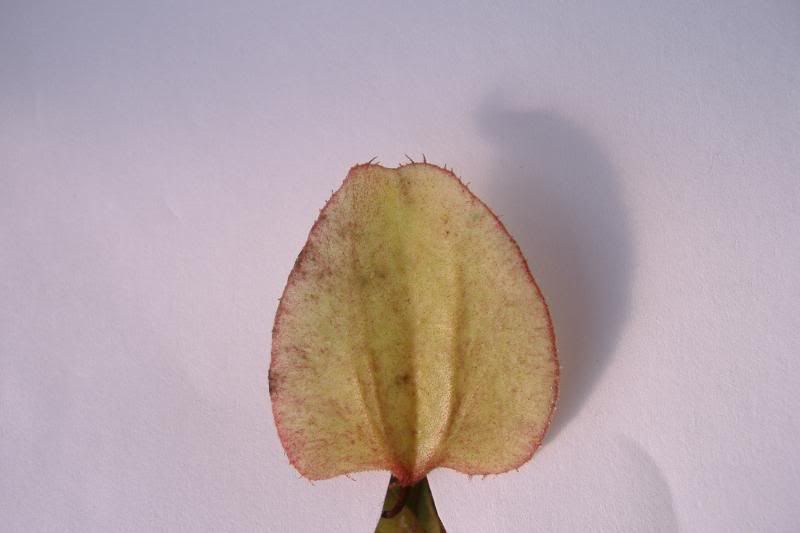 N. geoffrayii lid. 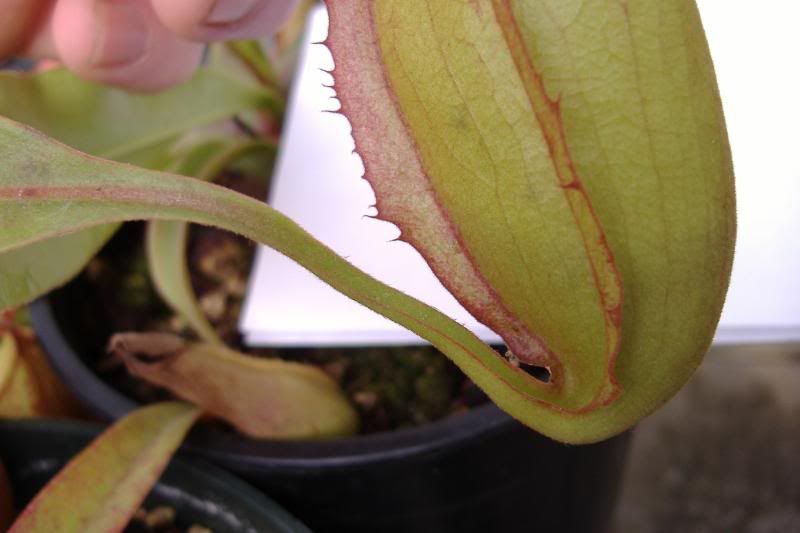 N. anamensis concave tendril 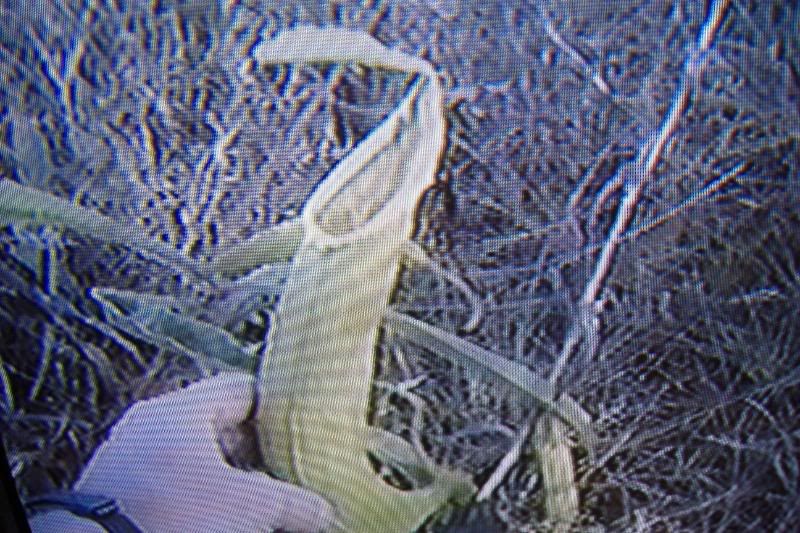 N. anamensis from Phu Kadung. 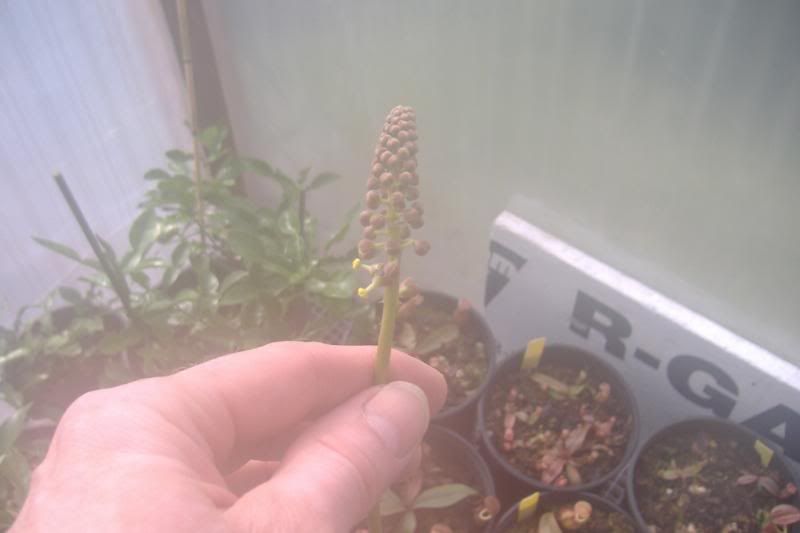 N. anamensis male flower. 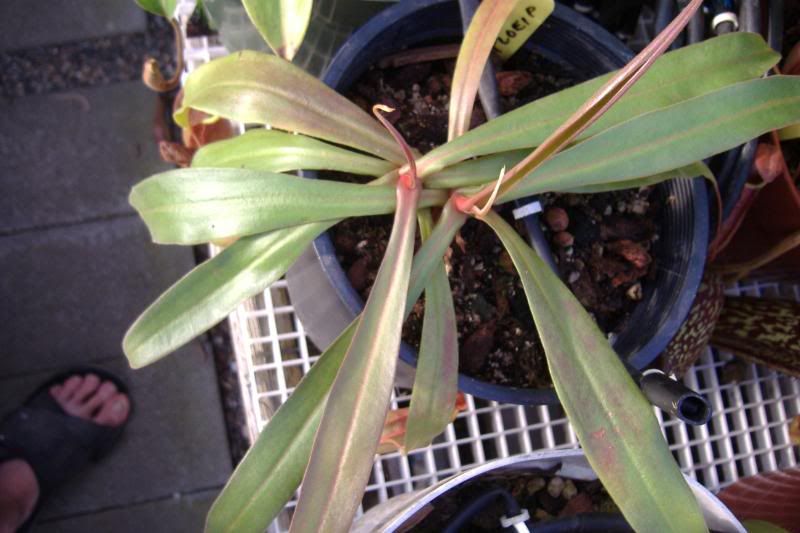 N. sp. from Loei province with thinner leaves.  N. anamensis leaves with wider leaves. Truly, Tom |
|
|
|
Post by sockhom on Jul 18, 2008 11:06:04 GMT -10
Hello Tom  . Thanks for the pictures. Well, this plant is what I consider to be N. smilesii. Now we have to know if the types of N . smilesii (at Kew) is indeed a N. anamensis plant. In that case, N. anamensis will become a synonym of N. smilesii. I don't want to stray away from the thread but you got to explain me what is that N. geoffrayi  ? How can you be so sure this plant fits with Lecomte's description? Would you be ok to tell us the exact location? (somewhere in Kampot province I know). As far as I remember, the differences between N. geoffrayi and N. kampotiana were very minor... (both were synonymised with N. anamensis by Jebb and Cheek). I thought this was a kind of ghost plant, just like N. borneensis ( N. boschiana). Friendly, François. |
|
Dave Evans
Nobiles
   dpevans_at_rci.rutgers.edu
dpevans_at_rci.rutgers.edu
Posts: 490
|
Post by Dave Evans on Jul 19, 2008 19:38:03 GMT -10
I have one question for you. Could you find somewhere (in the net, in your archives...) pictures of a plant you consider to be N. anamensis and picture of N. smilesii? Could you please show us those pictures?  François, Sorry, this is the only photo I have. It was taken by Marcello, you or someone else (I don't know for sure) of the type specimen. The title is "7.BawSaw.jpg"--much better quality photo compared to other photos I have seen. It shows a plant which appears closer to N. anamensis than N. mirabilis, but it doesn't show enough detail to rule out the hybrid possibility. I don't understand how Jan Schlauer could identify it as a N. mirabilis. He knows Nepenthes better than almost everyone... If he says he see the inclusion of N. mirabilis in this plant, I would have to believe he is at least partly correct. Sure he could be mistaken, but I think it is because the type specimen is ambiguous. Please notice how the lid of the pitcher is round. The lids of the plants you're calling N. smilesii are longer than wide, which is a match for the lids on N. anamensis... What shape lid does N. mirabilis have? I wonder, do the lids of this specimen have a little nub on lower surface near the end? I do notice the tendrils are very short which is in agreement with N. anamensis, as is the general shape of the inflorescence... Jebb and Cheek (1997) state: "Danser (1928) synonymised the species with N. mirabilis. Whilst the margin of the specimen at Kew does have a sparsely firmbriate margin, the venation is very atypical of N. mirabilis. In some characters this specimen demonstrated links to N anamensis and N. thorelii, and without further material its inclusion with N. mirabilis seems premature." I do not agree with Jan, but do agree with Jebb and Cheek. However, based on how both groups of authors describe this plant from Baw Saw, it sounds rather intermediate between N. anamensis and N. mirabilis. Jan is taking the broad view of the species calling it an atypical example of N. mirabilis, while Jebb and and Cheek were taking a more conservative stance in 1997... All I know is, N. anamensis does not have a sparely fimbriate leaf margin. Since I cannot see the venation nor the leaf margins clearly in the photo, I cannot compare it to plants from, say, Phu Kradung... Also, please notice how the tips of the leaves of N. anamensis are very similar to those of N. rowanae and also N. "viking" with the lamina extended as a flattened wing onto the tendril. I believe Clarke has mentioned this is unique to N. rowanae, but it is not quite--it is more exaggerated in N. rowanae, but not unique. |
|
|
|
Post by sockhom on Jul 26, 2008 11:10:28 GMT -10
I didn't notice the picture, Dave.
Many thanks.
I have to agree that it's strange to me that the lid of this type specimen is round and not elongated.
I think Marcello has checked this specimen. Let's wait what he has to say.
François.
|
|
|
|
Post by Marcello Catalano on Aug 5, 2008 13:01:15 GMT -10
Hi guys! -have you ever seen a flower thin and long like that on N. mirabilis?  -have you ever seen N. mirabilis flowering at the rosette stage?  But maybe you saw some other species doing that  And considering that in no way those two species can grow together... A couple of less scientific arguments: -unfortunately the shape of the lid - which I also thought could be completely stable - is not, the plants from Phu Kradung are a form of smilesii on its own, slightly different from those on some other mountains. On Phu Wua for example I made sure that it was smilesii checking the lids of dead pitchers...to then find out that sometimes they were round, sometimes elliptical. The same happened with kongkandana and kampotiana. We can only say "generally", but the lid shape is not a safe bridge to walk on. -the area (northern Siam, Mekong river) where Baw Saw is, is smilesii area, not mirabilis. I think Schlauer just didn't know that the plant going around under our eyes as N. thorelii for 20 years was the plant he had to use to make comparisons with the Baw Saw specimen. When many years ago I asked him about these species, it was clear that he had not exactly idea of what an "anamensis" looked like, and he never mentioned "that plant everybody is growing as thorelii" to help me...he said "it looks like a hirsuta x gracilis hybrid, and hard to distinguish from those two"... !!! So I guess he was just sticking to the description, not to the actual, living plant. But that's just my guess, of course Jan would be very welcome to clear up what happened, what he thinks now and what he thought at the time of its statement, that would be another interesting chapter of my website!  Martin, at the Kew nursery, in the mean time, had labelled that ghost plant N. smilesii already, so he knew already what the real thing was like, which plant he was actually dealing with. Marcello |
|
Dave Evans
Nobiles
   dpevans_at_rci.rutgers.edu
dpevans_at_rci.rutgers.edu
Posts: 490
|
Post by Dave Evans on Aug 8, 2008 11:58:41 GMT -10
What do we do about plants that are already in cultivation as thorelii or anamensis? Guess at what they are, or leave them labeled as they are? Dear Ron, We will have to figure out what they are. Progress is being made, now with the help of the internet; information can be spread immediately, far and wide, and we can keep ourselves up-to-date. When grown side-by-side, these species certainly do look different. Too bad there has been so much confuse resulting from the very limited, brief, original species descriptions. Of course we really cannot blame the authors as they had no idea there are so many species of Nepenthes, nor that there is a whole tribe of tuberous species from what was then Indochina. |
|
|
|
Post by sulud1 on Sept 15, 2008 11:21:31 GMT -10
Hi, 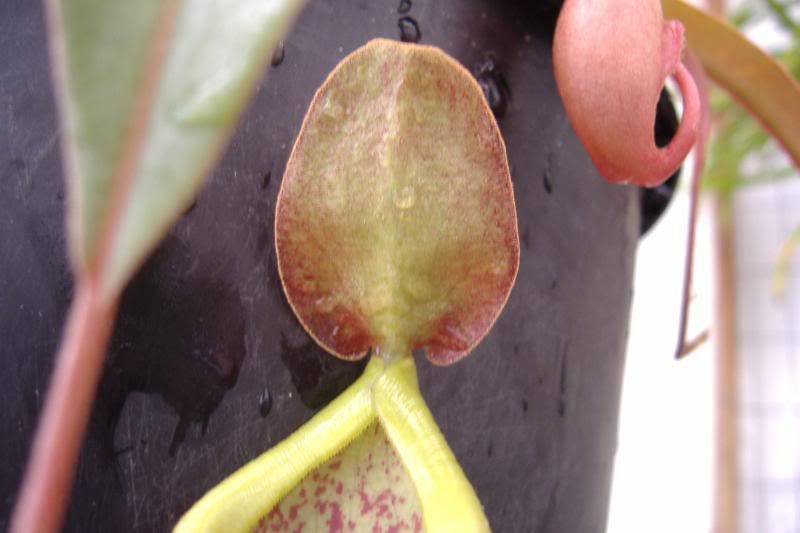 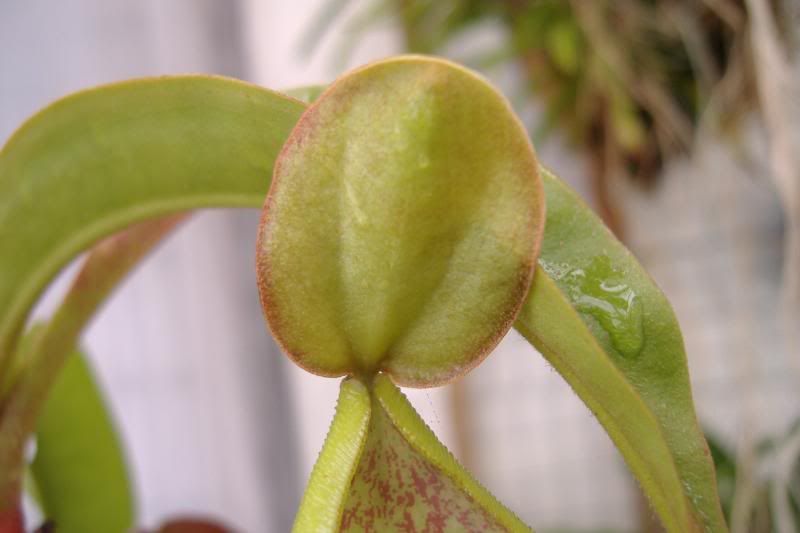 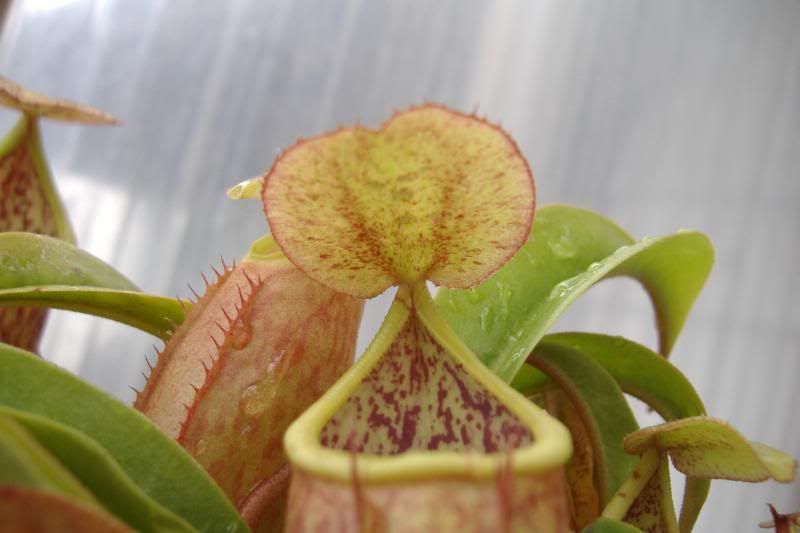 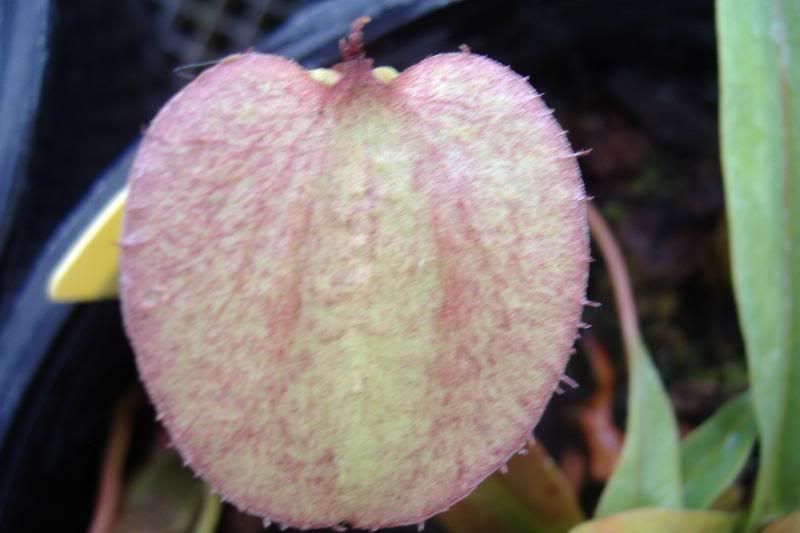 lids.  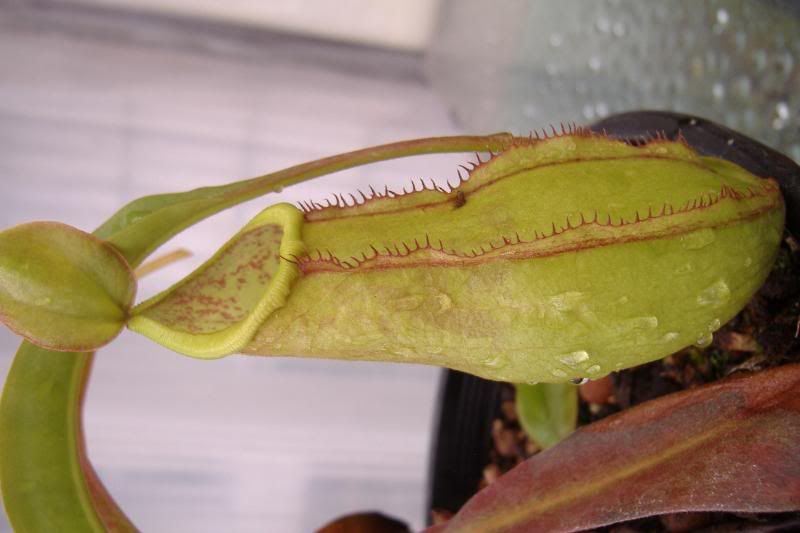  traps. 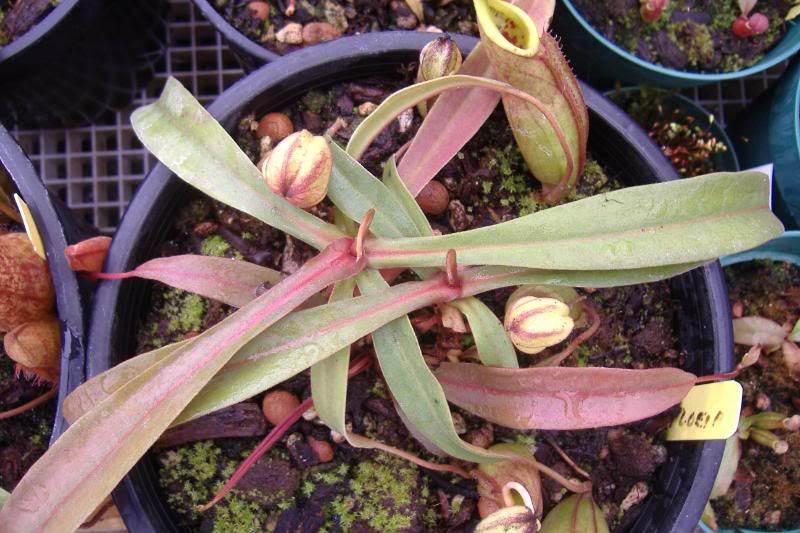 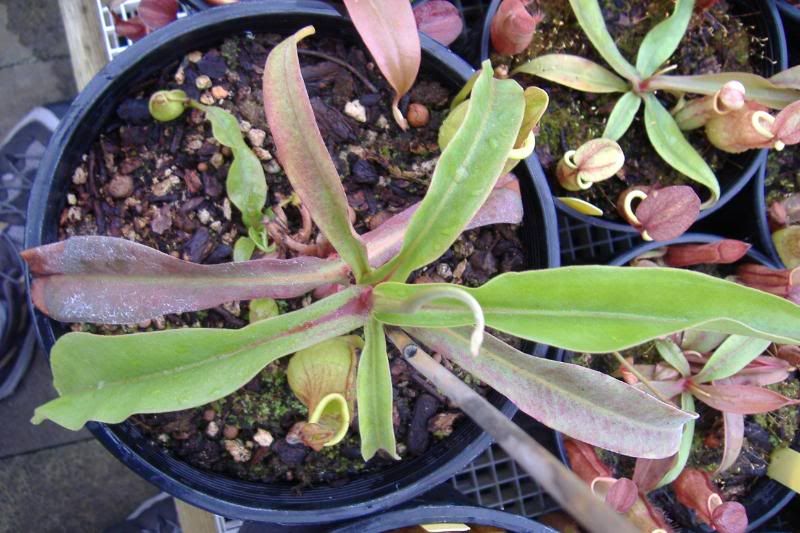 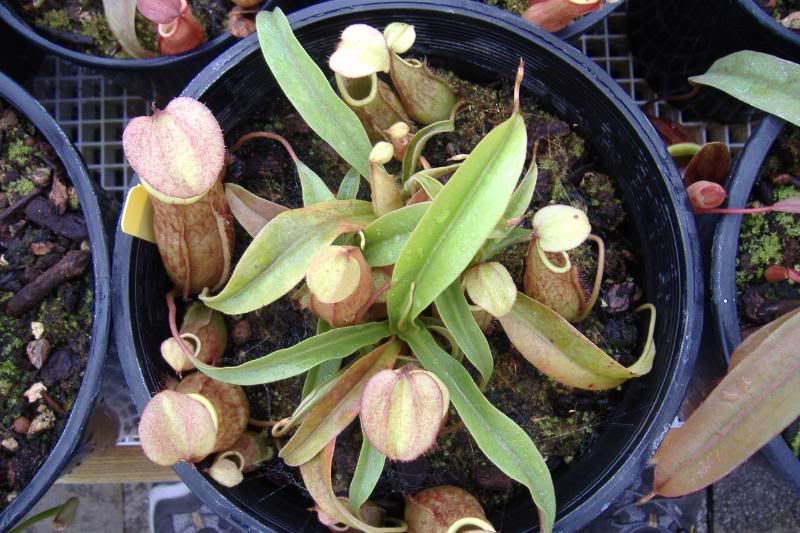 leaves. N. smilesii or anamensis or geoffrayi? Truly, Tom |
|
|
|
Post by sockhom on Sept 16, 2008 8:59:36 GMT -10
N. smilesii or anamensis or geoffrayi? Truly, Tom Come on Tom!How could you possibly grow N. geoffrayi? This old deleted species (synonym of anamensis / smilesii) has been collected somewhere in the Kampot province and nobody knows where exacly! I've seen the syntypes of N. geoffrayi (I've posted the pictures on the herbarium section) and I don't think they show any significant difference. The problem is that those Indochina species seem to flower even at an early stage. François. |
|
Dave Evans
Nobiles
   dpevans_at_rci.rutgers.edu
dpevans_at_rci.rutgers.edu
Posts: 490
|
Post by Dave Evans on Sept 17, 2008 11:44:47 GMT -10
Well, N. geoffrayi can be thought of as a more specific example of N. smilesii, but Tom mentions finding these two species growing together or at least near each other, right Tom?
I'm not clear on what the differences are supposed to be, if any...
As far as combining all these species into N. smilesii, not really a good idea. N. kampotiana has already been combined N. smilesii as well. Now, it is being considered as separate again... Wasn't there also specimens of _N._ Bokor found labeled as N. smilesii?
|
|